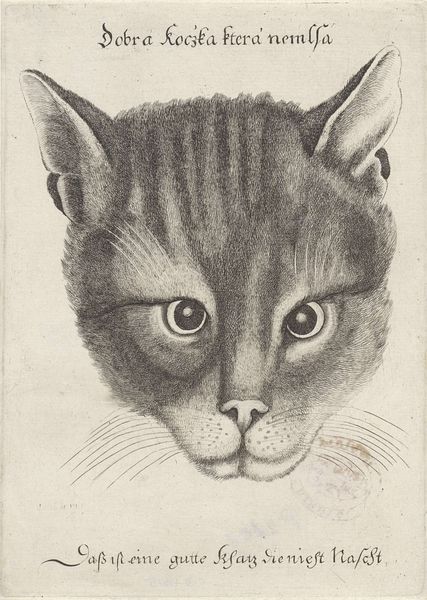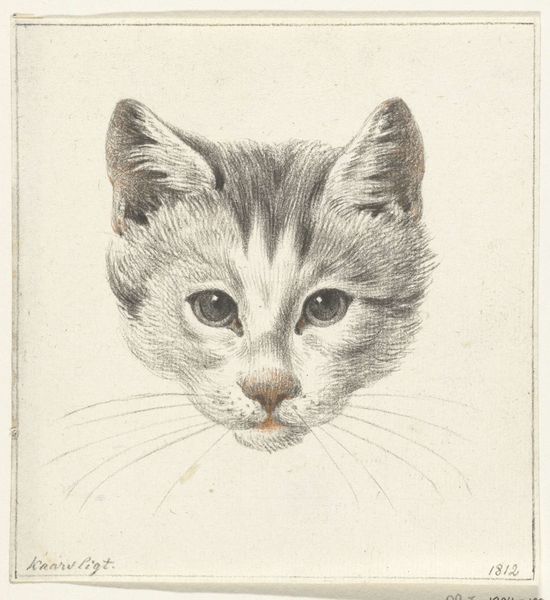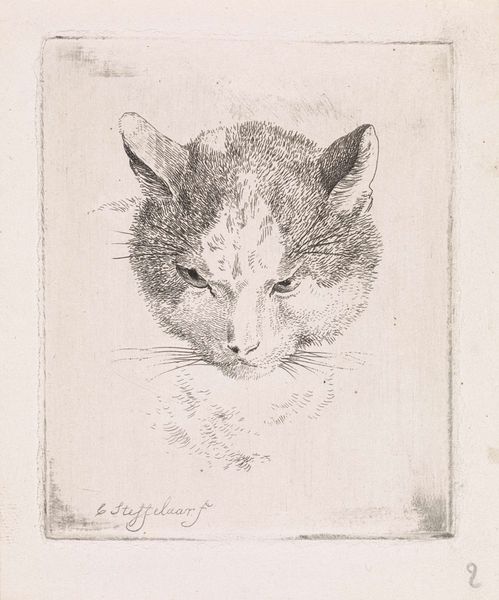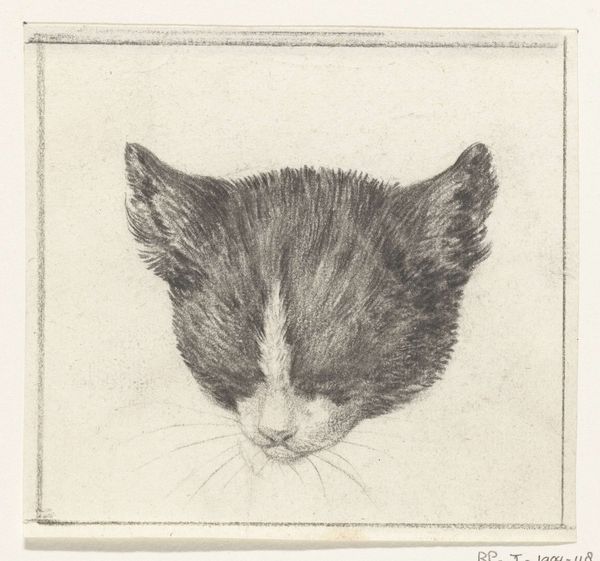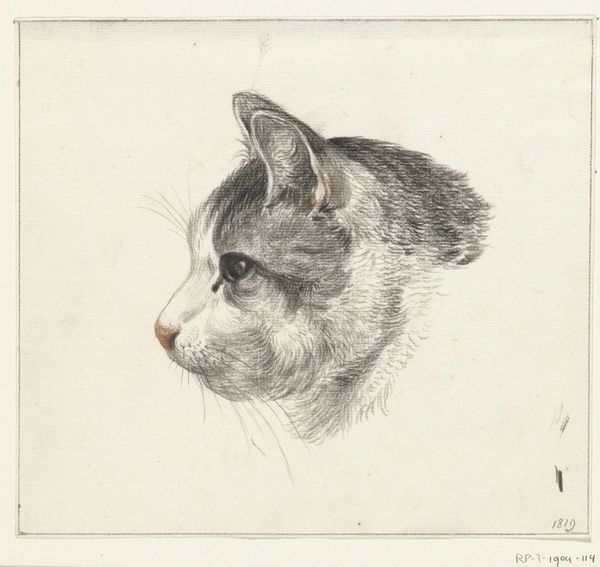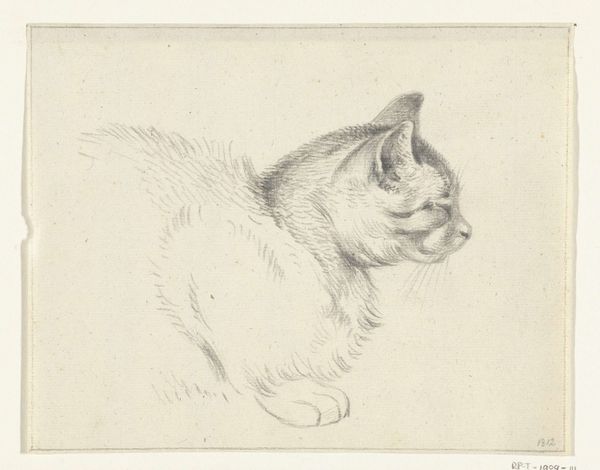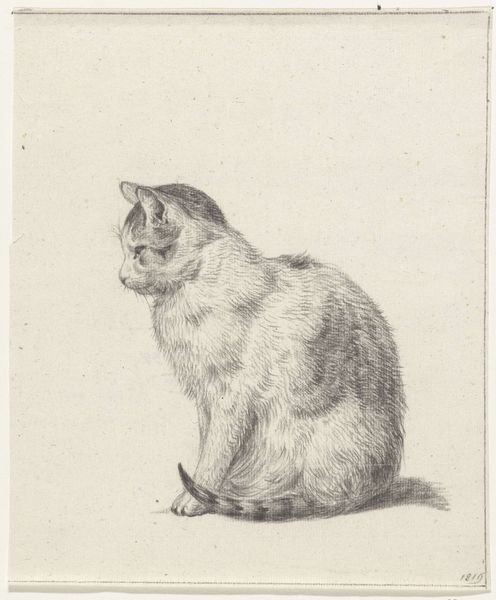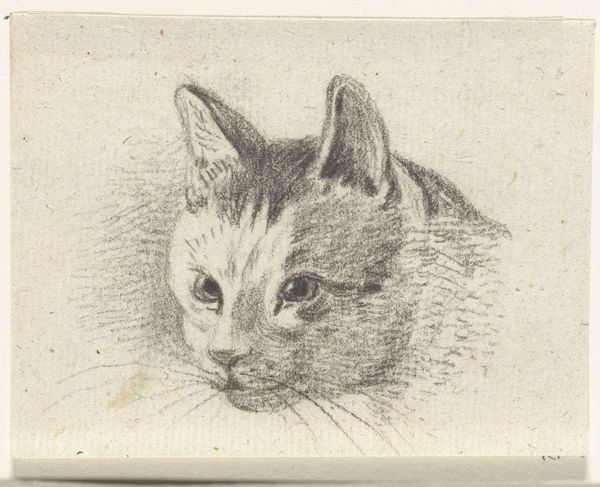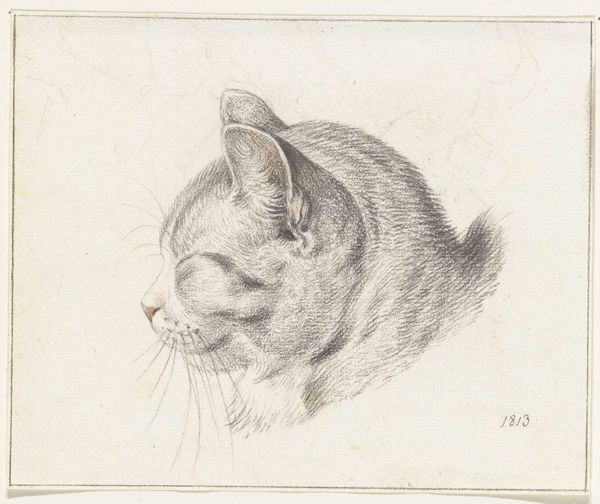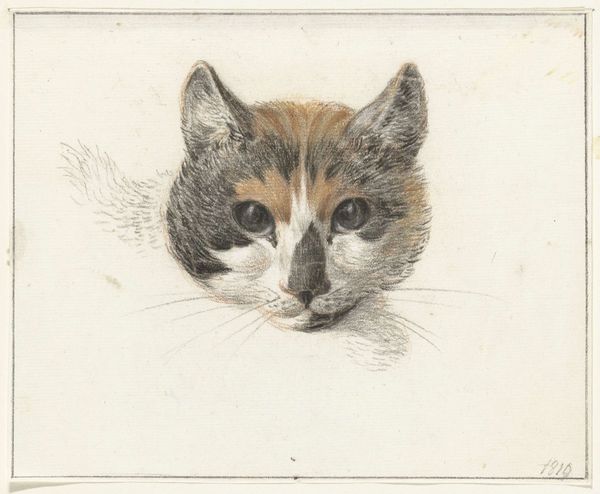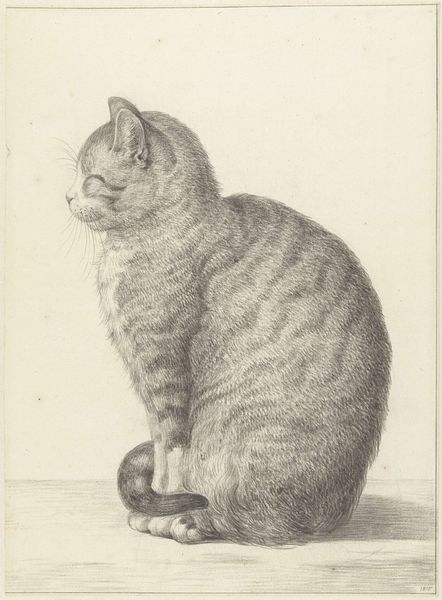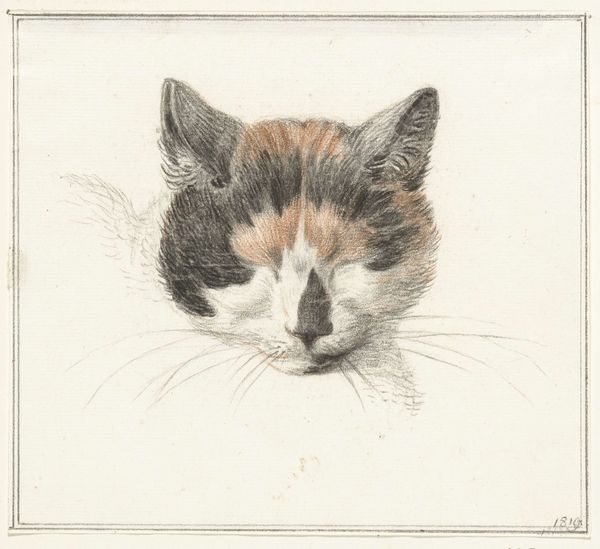
drawing, pencil
#
portrait
#
drawing
#
animal
#
botanical illustration
#
pencil drawing
#
pencil
#
botanical drawing
#
realism
Dimensions: height 185 mm, width 155 mm
Copyright: Rijks Museum: Open Domain
Curator: Before us, we have “Kattenkop, van voren,” or "Cat's Head, from the Front," a pencil drawing likely created between 1775 and 1833, and currently held here at the Rijksmuseum. It's attributed to Jean Bernard. Editor: There's something deeply unsettling about this. The unwavering stare, the flattened perspective...it feels less like a domestic pet and more like an ancient symbol. Curator: Absolutely, and while on the surface it might seem a simple study of a domestic animal, I believe the drawing also reveals tensions related to domestication and the natural world. Editor: Precisely! The cat, often a symbol of independence and cunning, is here pinned down, almost like a scientific specimen. This frontal view, the emphasis on symmetry… It evokes a sense of control, an attempt to categorize and contain its wilder essence. Think of the cat goddess, Bastet and how far from the venerated cat this portrait seems. Curator: And the artistic approach itself mirrors that attempt to dominate the animal. Consider the rise of natural history illustrations, driven by a desire to catalog and control the environment at this time. Bernard's meticulous strokes translate this urge onto the animal itself, mirroring control. It forces a confrontation with our power structures regarding nature and its representation. Editor: The light and shadow are particularly fascinating. It’s so evenly distributed, robbing the subject of its three-dimensionality, again reinforcing that flattened, symbolic reading. I'm thinking of Egyptian art and the stylistic choice to represent in two dimensions what it views as a vital and eternally relevant creature. Curator: Right, this begs a deeper analysis: Whose gaze is truly at play? Is Bernard seeking scientific accuracy or something deeper: a psychological mirror reflecting human attempts to tame, interpret, and manage not just the animal, but nature and wildness in ourselves? Editor: Looking at it again, the direct gaze holds defiance and vulnerability. It transcends its simple animal nature to become something…more universal. It echoes a resistance against being simplified or classified. Curator: Well said. This study by Bernard resonates with those tensions still persistent in our societal treatment of non-human life. Editor: A fittingly complex portrayal that persists to reveal the nuances and challenges within those human and non-human dialogues across time.
Comments
No comments
Be the first to comment and join the conversation on the ultimate creative platform.
